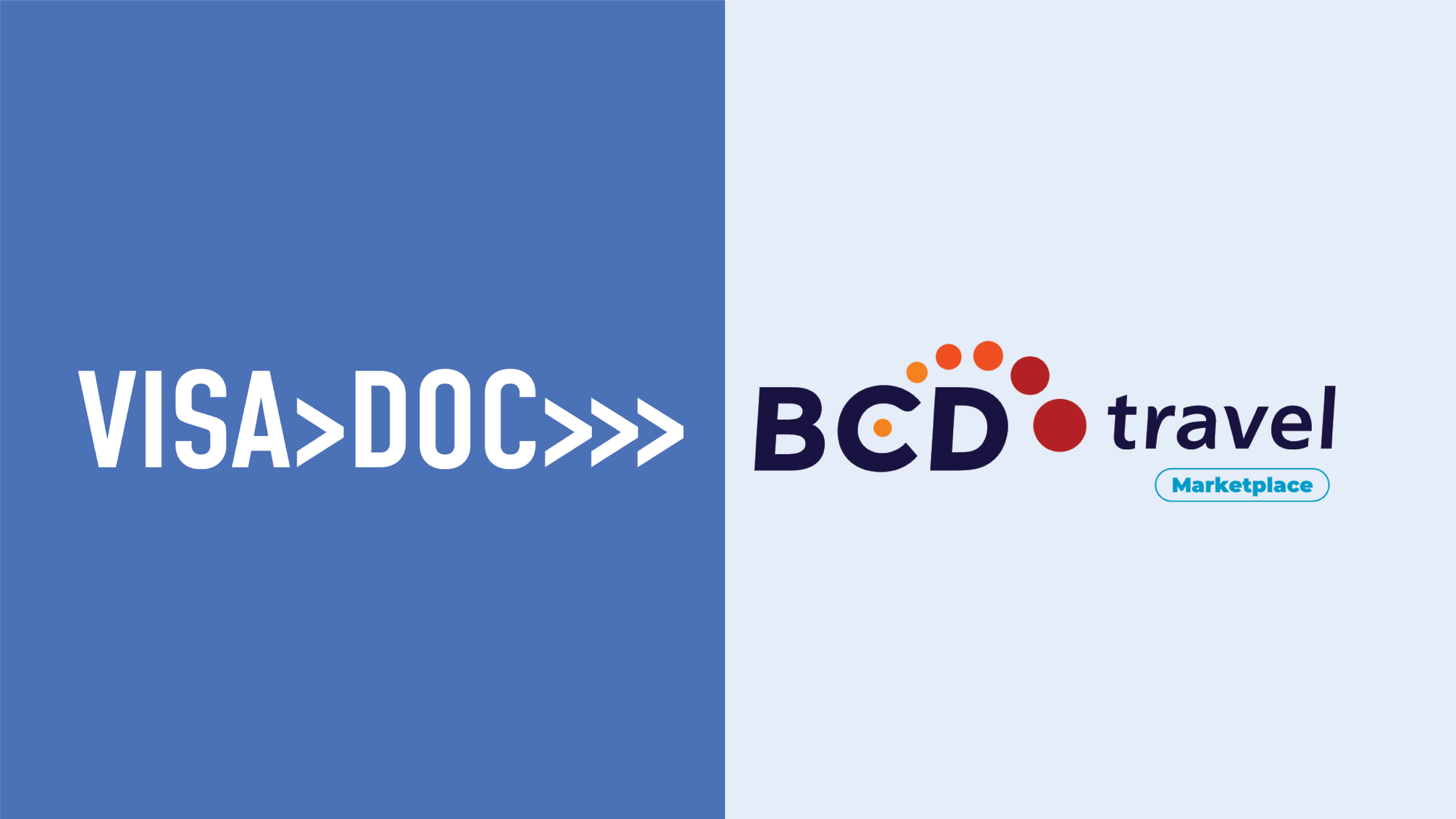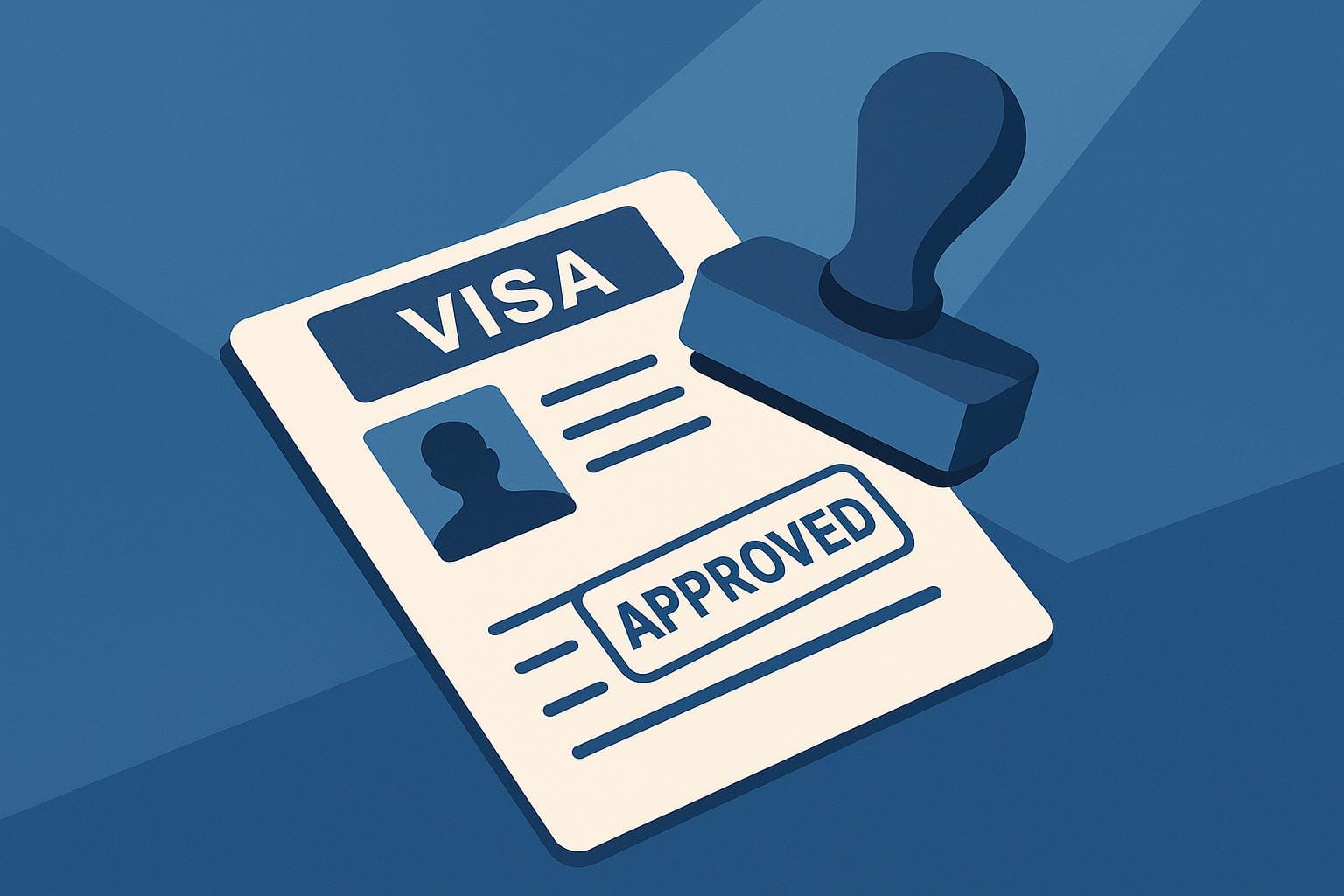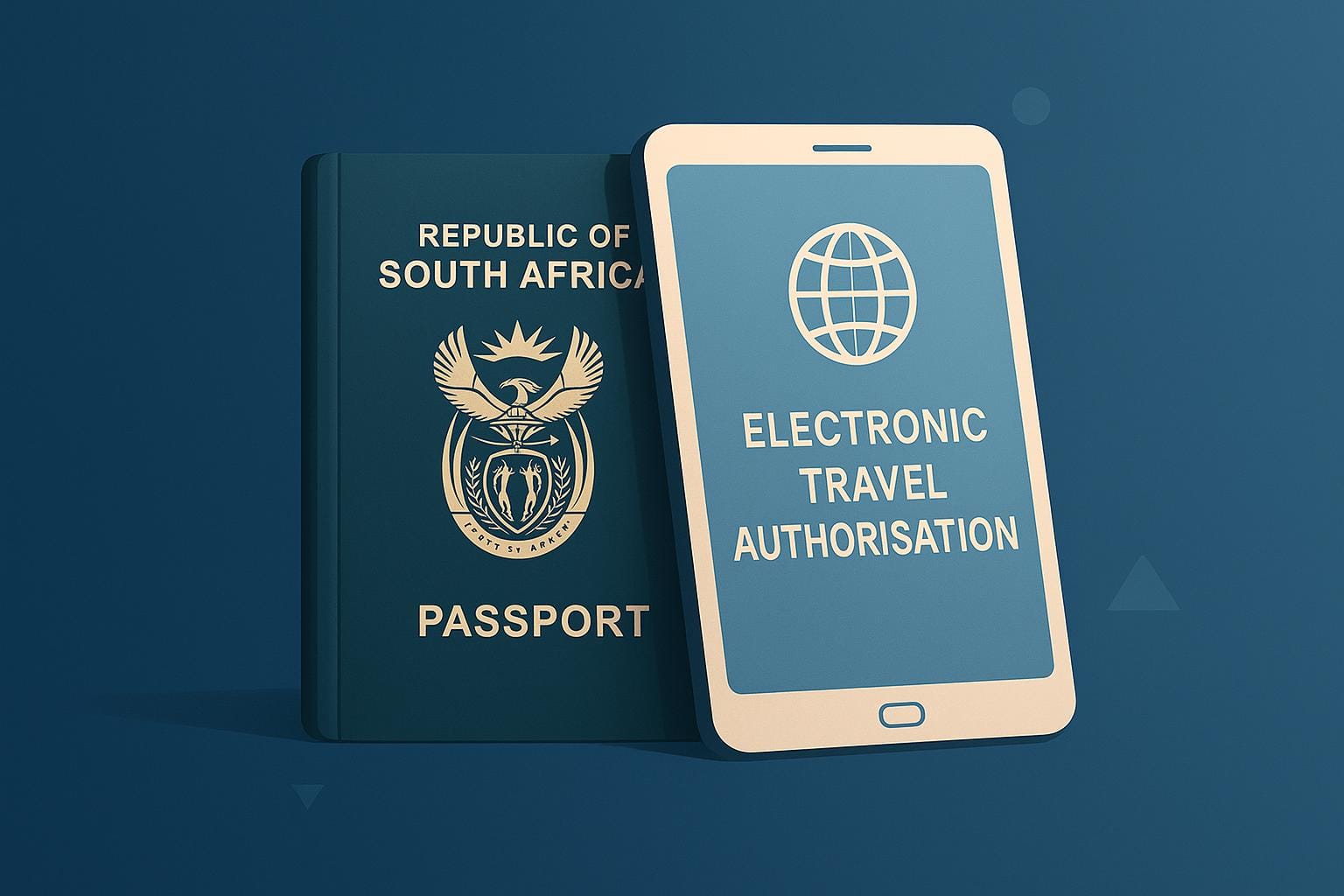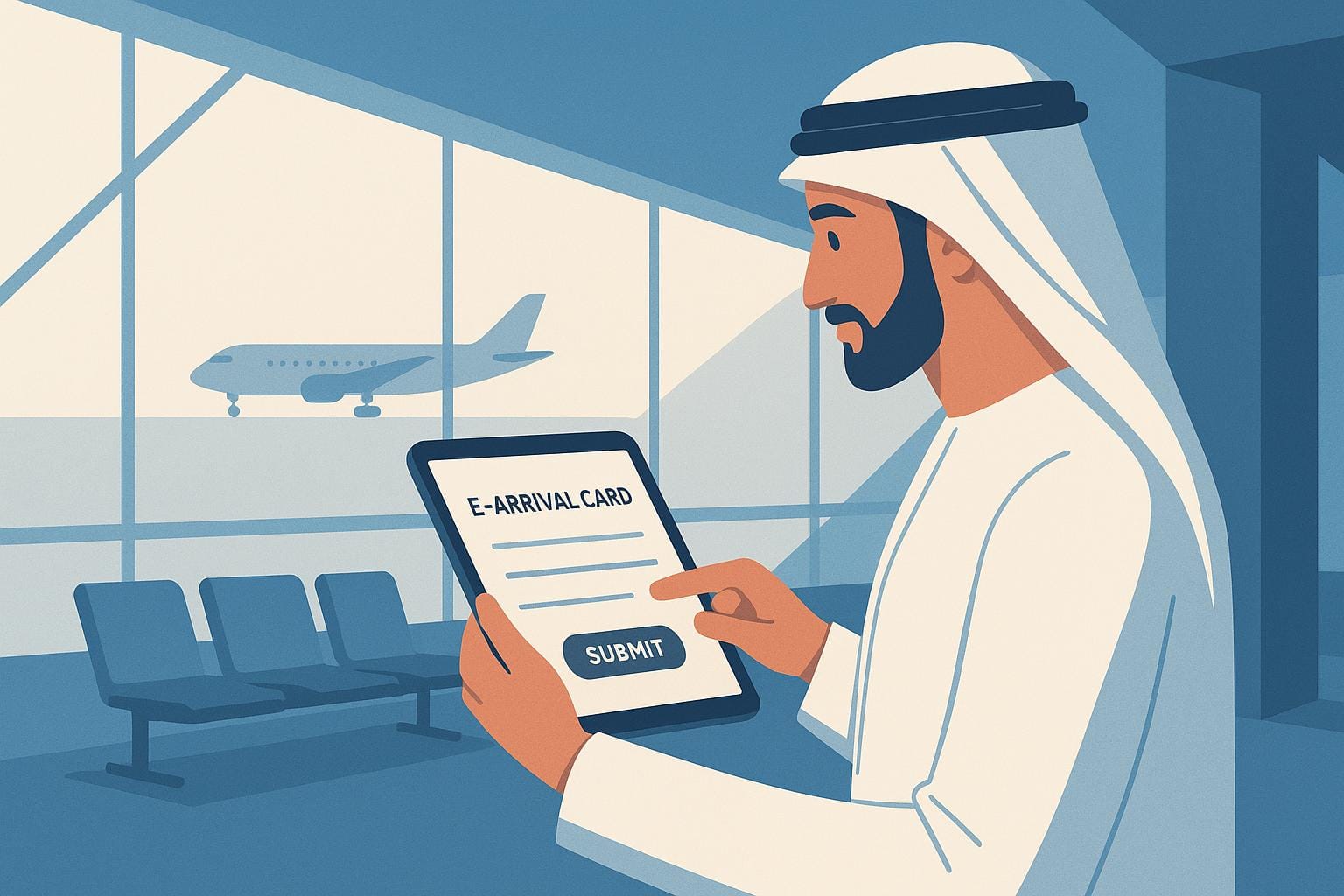Managing corporate visas is complex but essential for global businesses. Companies face challenges such as changing immigration rules, document management issues, long processing times, poor team communication, and managing growth. These can lead to delays, compliance risks, and financial penalties.
Here’s how to tackle these challenges effectively:
- Track Visa Rules with Digital Tools: Stay updated on changing regulations using automated alerts and AI-powered compliance systems.
- Simplify Document Management: Use centralised digital storage, automated verification, and secure access controls.
- Reduce Processing Delays: Submit accurate applications early, avoid peak seasons, and leverage expedited services for urgent cases.
- Improve Team Communication: Use integrated HR systems with shared calendars, automated workflows, and collaborative tools.
- Scale Operations with Technology: Automate high-volume visa processing and integrate systems with HR and travel platforms.
These strategies can streamline visa management, reduce risks, and ensure compliance, helping organisations focus on growth while navigating global mobility.
Challenge 1: Complex Visa Rules and Changes
Managing corporate visas is no small task, especially with immigration rules that vary by country and change frequently. This constant flux can expose organisations to legal and financial risks if not handled properly.
Take a look at some recent incidents. In 2023, Infosys faced a €31.5 million fine - the largest visa-related penalty in U.S. history - for visa misuse. Elsewhere, an Australian teacher was detained in Thailand for working online while on a tourist visa. In Luxembourg, workplace inspections shot up from 10,000 in 2022 to over 17,300 in 2023. These cases show how critical it is for organisations to have a firm grip on visa compliance.
Solution: Using Digital Tools to Track Requirements
Digital tools can simplify the way organisations track and manage visa requirements. A good example of this is Ukraine’s e-Visa programme, which reopened in February 2025. It allows travellers from 45 countries to apply online, with fees of US$20 for single-entry and US$30 for double-entry visas. This shift to digital processes demonstrates how technology can make visa management more efficient.
Modern platforms can offer organisations several benefits:
- Real-time alerts about changes in regulations
- Digital audit trails to maintain compliance records
- AI-powered document verification to reduce manual errors
- Automated reminders for renewals and deadlines
Challenge 2: Document Management Issues
Many organisations face difficulties in keeping visa-related documents accurate, secure, and well-organised. The challenge lies in juggling both paper and digital records, maintaining consistent document quality, and managing multiple versions. Just as navigating visa regulations can be tricky, effective document management is essential to avoid compliance risks.
Solution: Digital Document Systems
Digital systems simplify the entire document management process while ensuring GDPR compliance. Here's how they help:
- Centralised Storage: All visa documents are stored in one secure location, reducing the risk of loss and ensuring a clear audit trail.
- Automated Verification: These systems can verify passports, track visa expiry dates, validate supporting documents, and flag potential compliance issues.
- Secure Access Control: Role-based access ensures sensitive information is only available to authorised users, making it ideal for teams spread across departments or working remotely.
Key Areas to Address:
| Area | Challenge | Digital Solution |
|---|---|---|
| Document Quality | Inconsistent formats and missing details | Standardised templates and automated validation |
| Version Control | Confusion from multiple document versions | Real-time tracking and automatic version updates |
| Compliance | Meeting regulatory requirements | Automated checks and detailed audit trails |
Challenge 3: Long Processing Times
Long visa processing times can throw project schedules off track and limit employee mobility. Current wait times at major consulates highlight the issue: Melbourne takes 220 days, Paris 200 days, and Madrid 124 days for visa appointments.
Here’s what’s causing the delays:
| Delay Factor | Impact on Processing | Business Implications |
|---|---|---|
| Document Verification | Extra time needed to review paperwork | Project timelines get pushed back |
| Seasonal Volume | Higher demand during peak periods | Less flexibility for urgent travel |
| Third-party Dependencies | Delays from medical exams or language tests | Longer preparation times |
| Application Errors | Requests for corrections or extra info | More administrative work |
These challenges call for a well-planned approach to streamline visa applications.
Solution: Better Application Methods
To minimise these delays, you can adopt the following strategies:
- Ensure complete and accurate documentation: Double-check paperwork, use standardised templates, keep digital backups, and have clear verification steps in place before submission.
- Time applications wisely: Submit visa requests during off-peak periods to avoid seasonal backlogs. Tourist seasons often lead to longer wait times.
- Leverage emergency provisions: For urgent cases, such as medical emergencies, humanitarian reasons, or significant financial losses, expedited processes may be available.
"There are standard time limits within which visa applications are processed by the Home Office if everything is right with the application and the applicant. But many times you may have to face delays." – visaandmigration.com
Challenge 4: Poor Team Communication
When departments fail to communicate effectively, visa processing can become chaotic. At TechWave - a software company with offices in London, New York, and Bangalore - poor coordination between teams caused missed deadlines, duplicate submissions, and scheduling conflicts. These issues affected around 20% of their remote workforce, highlighting how critical smooth communication is for managing visas efficiently.
Solution: Integrated HR Systems
Fixing these communication issues starts with a unified system. Integrated HR tools can provide several benefits:
- Centralised Communication Hub: Shared calendars and project management tools help teams stay aligned and avoid missteps.
- Automated Workflow Management: Automating tasks like compliance checks, timeline tracking, and SLA reminders reduces manual errors.
- Collaborative Communication: Mercer’s experience in Singapore found that moving away from a rigid top-down approach to a more collaborative style boosted employee satisfaction by 30%.
To make these solutions work, companies should consider asynchronous communication platforms for teams in different time zones, clear documentation processes, standardised templates for visa-related tasks, and regular cross-departmental meetings. Keeping digital records of all communication also ensures transparency and accountability.
Challenge 5: Managing Growth and Volume
As organisations expand globally, handling a growing number of visa applications while staying compliant becomes more complex. Manual processes often struggle under the pressure, especially when stricter regulations demand extra documentation and verification. This builds on earlier efforts to improve regulatory tracking, document management, and team coordination.
Solution: Tools for High-Volume Processing
Digital tools are key to tackling the challenges of scaling visa operations. These platforms simplify the process and handle large volumes efficiently.
Modern systems automate tasks like document validation, flagging missing details, and ensuring compliance. They also integrate with existing HR and travel systems, enabling:
- Real-time visa status tracking
- Automated compliance checks
- Synchronised travel and visa records
- Centralised data management
VisaDoc’s platform, for example, uses AI-driven verification to minimise common submission errors and maintain compliance with current regulations.
To manage growth effectively, organisations should:
- Implement automated document verification
- Set up workflows that can scale with demand
- Connect visa systems with HR and travel platforms
- Centralise compliance oversight
- Provide HR teams with training on digital tools
Conclusion: Making Visa Management Work
Addressing the challenges of visa management highlights the growing need for digital transformation. Today’s digital tools simplify global mobility, making corporate visa management easier to navigate.
Solutions like VisaDoc are changing the game by automating up to 90% of visa processing workflows, simplifying global business travel. Partnerships improve transparency and processing efficiency, while automation tackles common issues faced in traditional methods.
To modernise visa management, consider these steps:
- Use consolidated systems for managing human resources
- Apply AI-powered tools for document verification
- Set up compliance monitoring in real time
- Connect visa management systems with HR and travel platforms
"We focus on quality, not speed."
Lord Sonny Leong reminds us that while efficiency is important, accuracy and compliance must remain priorities. Digital tools that blend automation with expert input make this balance possible.













